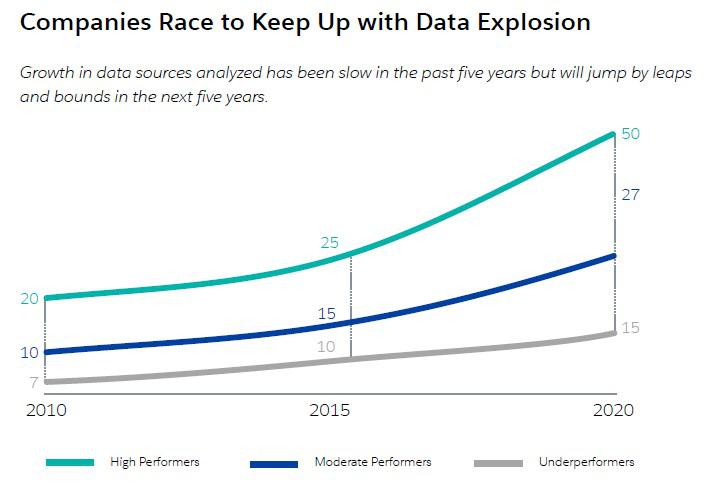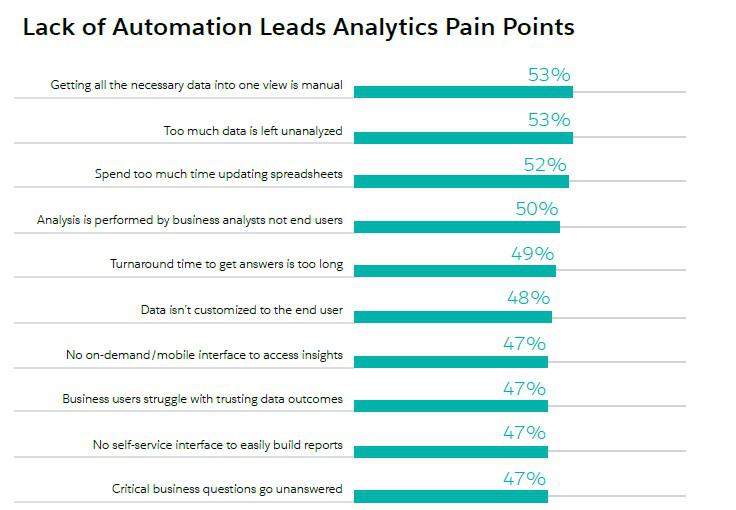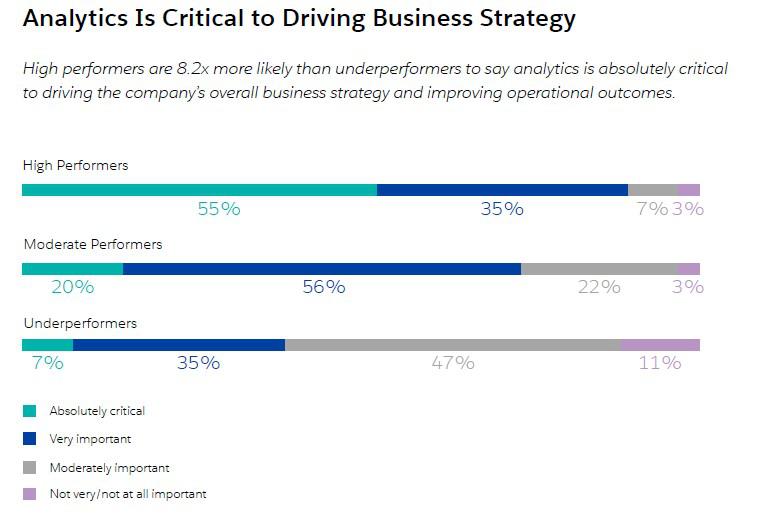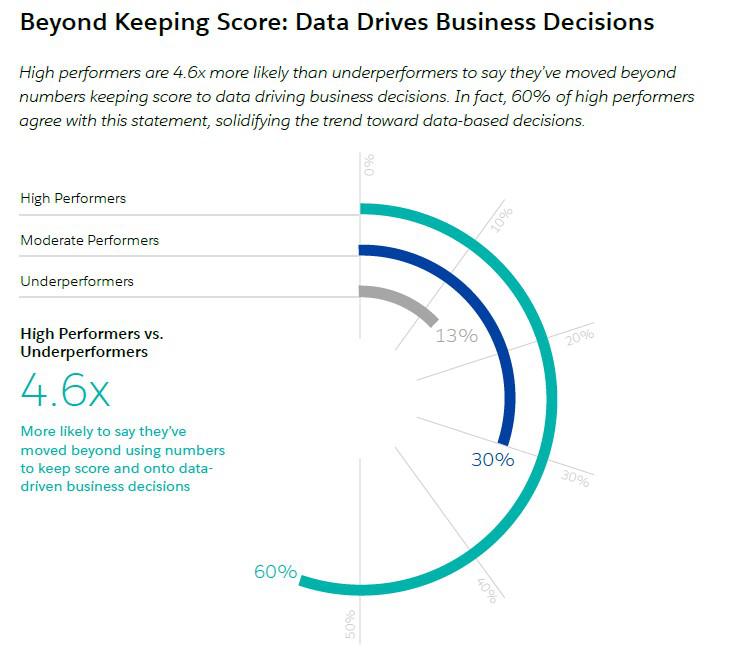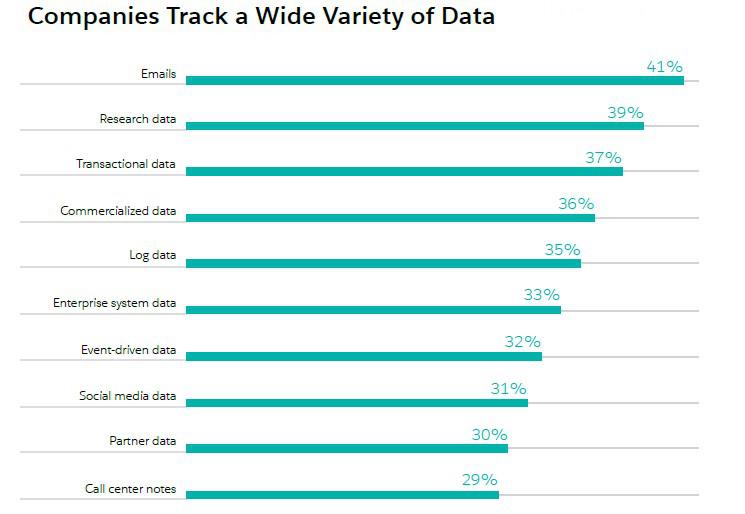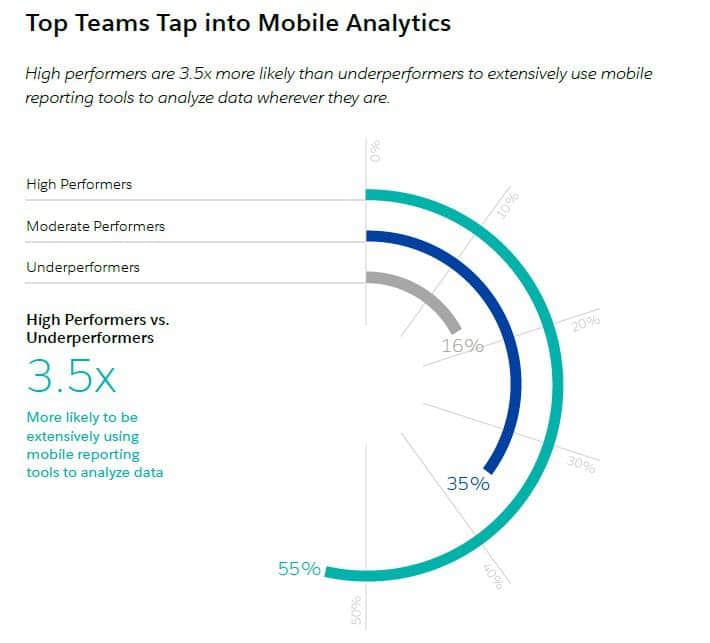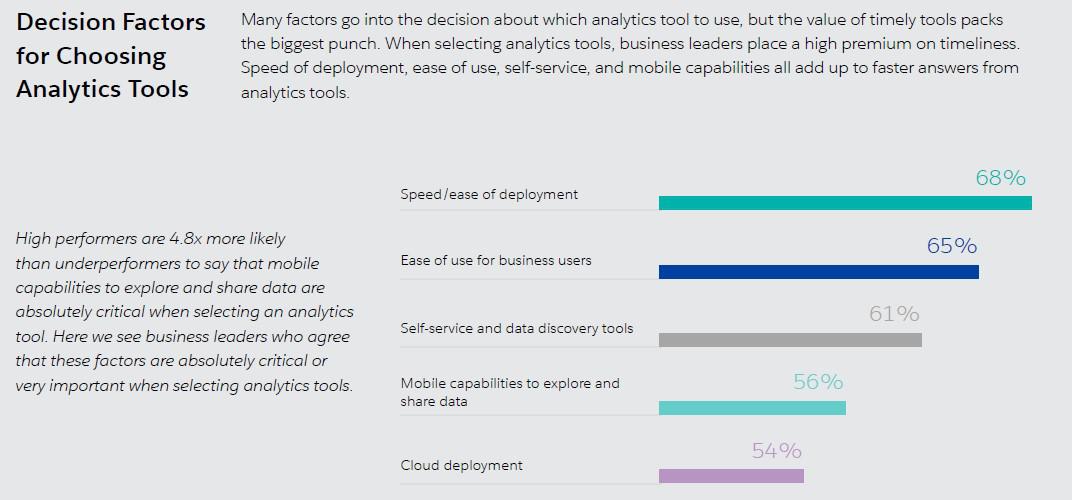 Between 2015 and 2020, the number of data sources analyzed by enterprises will jump 83%.
Between 2015 and 2020, the number of data sources analyzed by enterprises will jump 83%.- 9 out of 10 enterprise leaders believe analytics is absolutely essential or very important to their overall business strategies and operational outcomes.
- 54% of marketers say marketing analytics is absolutely critical or very important to creating a cohesive customer journey.
- High performing enterprises are 5.4x more likely than underperformers to primarily use analytics tools to gain strategic insights from Big Data.
These and many other interesting insights are from the 2015 State of Analytics study from Salesforce Research. Salesforce conducted the study in mid-2015, generating 2,091 responses from business leaders from enterprises (not limited to Salesforce customers). Geographies included in the study include the U.S., Canada, Brazil, U.K., France, Germany, Japan, and Australia. While Salesforce is a leading provider of analytics, the report strives to deliver useful insights beyond just endorsing their product direction.
10 insights and predictions on the state of analytics include the following:
- Between 2015 and 2020, the number of data sources analyzed will jump 83%. Salesforce Research found that the number of data sources actively analyzed by businesses has grown just 20% in the last five years. This is projected to accelerate rapidly, attaining a compound annual growth rate of 120% in the 10-year forecast period. High performing enterprises will be relying on a projected 50 different data sources by 2020, leading all performance categories tracked in the study.
- Relying on manual processes to get all the data in one view (53%) is one of the greatest challenges enterprises face today. Additional factors driving enterprises to integrate more data sources into their analytics applications include finding that too much data is left unanalyzed (53%), spending too much time updating spreadsheets (52%), and analysis is performance by business analysts, not end users of the data (50%). All of these factors and those shown in the graphic below form the catalyst that is driving greater legacy, 3rd party and broader enterprise data integration into analytics applications.
- 9 out of 10 enterprise leaders believe analytics is absolutely essential or very important to their overall business strategies and operational outcomes. In addition, 84% of high performers are projecting that the importance of analytics will increase substantially or somewhat in the next two years. 65% of all business leaders surveyed are predicting that the importance of analytics will increase substantially or somewhat in the next two years.
- High performing enterprises are 4.6x more likely than underperformers to agree that data is driving their business decisions. In addition, 60% of high performing enterprises’ leaders agree with the statement that their organizations have moved beyond numbers keeping score to data driving business decisions. Salesforce Research also found that 43% of high performers rely on empirical data, developing hypotheses and then experimenting and observing the outcomes before making a decision.
- Driving operational efficiencies and facilitating growth (both 37%) are the two areas enterprises are initially focused on with analytics today. Once analytics apps are delivering insights and are part of daily workflows, enterprises expand their use into optimizing operational processes (35%), identifying new revenue streams (33%) and predicting customer behavior (32%). The following graphic provides a comparison of the top ten use cases.
- High performance enterprises consistently analyze more than 17 different kinds of data across their analytics apps. In contrast, underperforming organizations only analyze 10 different data sources, and moderate performers, 15. The following graphic provides an overview of the top ten most-used sources of data.
- High performers are 3.5x more likely than underperformers to extensively use mobile reporting tools to analyze data wherever they are. 55% of high performing enterprises are more likely to be extensively using mobile reporting tools to analyze data. The following graphic compares mobile analytics adoption across high, medium and low performing enterprises.
- Speed of deployment (68%), ease of use for business users (65%) and self-service and data discovery tools (61%) are the three top three priorities leaders place on selecting new analytics apps. Mobile capabilities to explore and share data (56%) and cloud deployment (54%) are the fourth and fifth factors leaders mentioned. The following graphic compares the decision factors that go into selecting an analytics app.
- Industries who have the greater analytics adoption today (over 50% of users active on apps and tools) include high tech (36%) and financial services (32%). Automotive (30%) and media & communications (30%) also have attained significant adoption.

- High performing enterprises are 5.4x more likely than underperformers to primarily use analytics tools to gain strategic insights from Big Data. Leaders in high performance enterprises see the value of Big Data (76%) to a much greater extent than their lower performing counterparts (14%). High performing enterprises are 3.1x more likely than underperformers to be confident in ability to manage data from internal systems, customers, and third parties.


